Mad Hedge Biotech & Healthcare Letter
June 25, 2020
Fiat Lux
Featured Trade:
(COVID-19’s STEROID ROADBLOCK)
GILD), (MRNA), (INO), (SVA), (AZN), (MRK), (SNY), (GSK), (NVAX), (JNJ), (PFE), (LLY), (REGN)
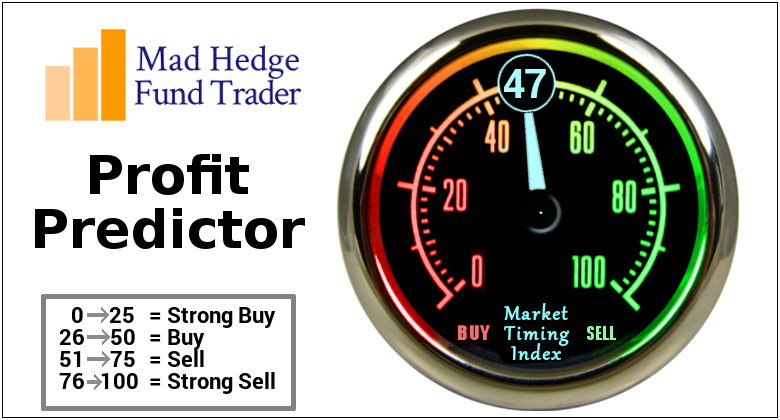
Mad Hedge Biotech & Healthcare Letter
June 25, 2020
Fiat Lux
Featured Trade:
(COVID-19’s STEROID ROADBLOCK)
GILD), (MRNA), (INO), (SVA), (AZN), (MRK), (SNY), (GSK), (NVAX), (JNJ), (PFE), (LLY), (REGN)

Science rarely gets communicated accurately.
Earlier this month, UK health experts said that an existing drug called dexamethasone can cut the risk of death among patients suffering from severe COVID-19.
According to the Oxford University researchers, dexamethasone lowered the COVID-19 deaths by roughly 35% among patients in ventilators and 20% among those who required oxygen.
The experts clarified that this means for every 8 patients on ventilators treated with dexamethasone, they were able to save 1 life.
In response to this study, here’s the gist of what most news outlets reported: “Miracle COVID-19 cure discovered!”
Now, health experts are scrambling to get their voices heard over the loud pronouncements of opportunistic businesses heralding the sale of this life-saving drug.
Days after the UK experts released this information, government authorities have issued warning after warning against stockpiling this drug for personal consumption.
Up until today, they’re still convincing people that dexamethasone is not a community drug and should only be used if prescribed by a medical professional.
That is, dexamethasone is a treatment for the sickest of the sick and should not be used as a preventive treatment.
Here’s how it works, and why it can only be used in severe cases.
The dexamethasone dampens the immune system for patients in ventilators or oxygen. This is effective because in severe cases, the immune system turns against the body, specifically the lungs, causing deaths. That’s what dexamethasone addresses.
This means that dexamethasone cannot be used on mild COVID-19 cases. Patients classified under this category still have relatively healthy immune systems, which would of course be more preferable tools to fight the disease.
Although there has been a misconception about this treatment, this drug is definitely a breakthrough that the world badly needs at the moment. The positive results of its efficacy make it a first-line therapy until a vaccine gets approved.
So far, the leaders in the vaccine race include Moderna (MRNA), Inovio (INO), Sinovac Biotech (SVA), AstraZeneca (AZN)/Oxford, Merck (MRK), Sanofi (SNY), GlaxoSmithKline (GSK), Novavax (NVAX), Johnson & Johnson (JNJ), and Pfizer (PFE).
Dexamethasone has been around for almost 60 years, making the drug available practically everywhere.
It’s also safe since dexamethasone is included in the WHO’s list of essential drugs.
What we know is that this drug has been approved by the UK government to be used on COVID-19 patients in ventilators and oxygen.
Before being identified as a potential COVID-19 cure, dexamethasone has been widely used as a steroid treatment for rheumatoid arthritis, asthma, bowel disorders, skin disease, and some cancers.
The average retail cost of this drug is around $50 per 10mg. Since the treatment only requires a low dosage, the price would fall somewhere between $6 to $8 per patient.
Needless to say, this cheap treatment could hurt the sales of competing drugmakers aiming to come up with their own COVID-19 cure.
To date, the leaders in this field include Eli Lilly (LLY), Regeneron (REGN), and of course, Gilead Sciences (GILD).
Among those, the only treatment to show a noticeable effect in treating severe COVID-19 patients is Gilead’s Remdesivir.
Although Remdesivir has not been hailed as a miracle cure, this Gilead product managed to offer sufficient benefits to fuel demand.
According to its Phase 3 trial data, 65% of patients dosed with Remdesivir for five days showed better clinical improvement compared to a standard-of-care group.
When the pandemic broke out, Gilead announced that it’s giving away its remaining supply of Remdesivir, which amounts to roughly 1.5 million doses.
Nonetheless, the company disclosed that it plans to invest up to $1 billion on the development of the drug for COVID-19 patients.
Since government funding also comprises a portion of Remdesivir’s development, the arrangement inevitably raises the question of how much revenue the drug can generate.
After all, pricing will definitely be crucial because the company will have to strike a balance between making an acceptable profit and offering an affordable cure to patients.
Financial analysts estimate that Remdesivir’s potential profit could reach $7.7 billion by 2022.
If these estimates turn out right, then Gilead investors are sitting on a veritable gold mine.
Regardless of Remdesivir’s sales, Gilead remains a giant biotechnology and pharmaceutical company with a market capitalization of $97.18 billion.
In fact, it’s considered as one of the recession-resistant companies today thanks to its diversified portfolio and strategic acquisitions.
One of the main reasons for its stature in the industry is the fact that Gilead continues to be the definitive leader in the HIV market today.
Its top-selling drug Biktarvy recorded an impressive $4.1 billion in sales for the first quarter of 2020 alone, a substantial increase from its $3.6 billion earnings during the same period in 2019.
On top of that, Gilead secured patent exclusivity for Biktarvy until the early 2030s. This all but guarantees that the company’s cash cow remains safe from competition for many years.
The expansion of gene therapy Yescarta to cover the European market also proved to be effective. Sales of this lymphoma treatment jumped from $96 million in the first quarter of 2019 to $140 million in the same period this year.
Meanwhile, Gilead’s $4.9 billion acquisition of Forty Seven in April this year indicated the company’s move to expand its oncology sector. Specifically, blood cancer therapy Magrolimab is projected as the next blockbuster.
All these demonstrate that Gilead is well-positioned to handle major financial and even health crises.
More importantly, Gilead’s position as a leader in the search for a COVID-19 cure indicates its capacity to withstand a possible second wave of this pandemic as well as the potential to boost its sales in the process.
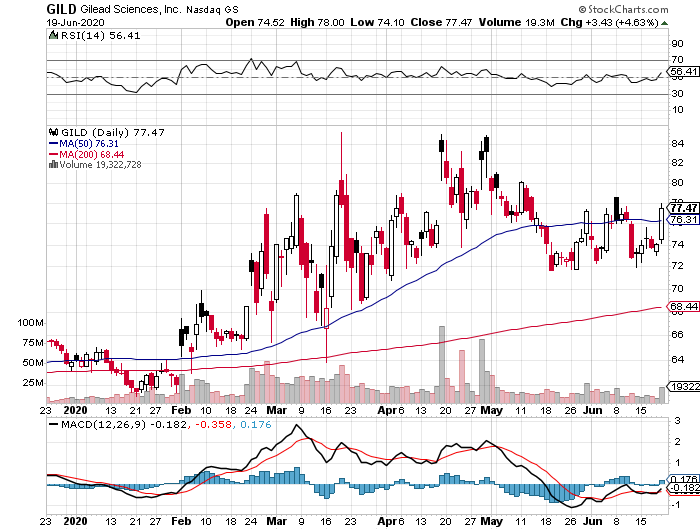
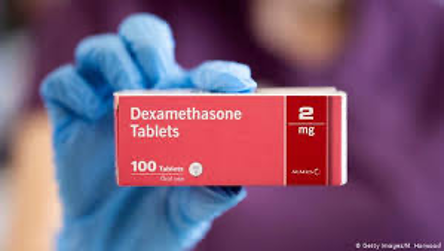
Mad Hedge Biotech & Healthcare Letter
May 19, 2020
Fiat Lux
Featured Trade:
(PFIZER’S LATEST COVID-19 VACCINE ENTRY)
(PFE), (BNTX), (MRNA), (INO), (CTLT), (SVA), (EBS), (MYL)
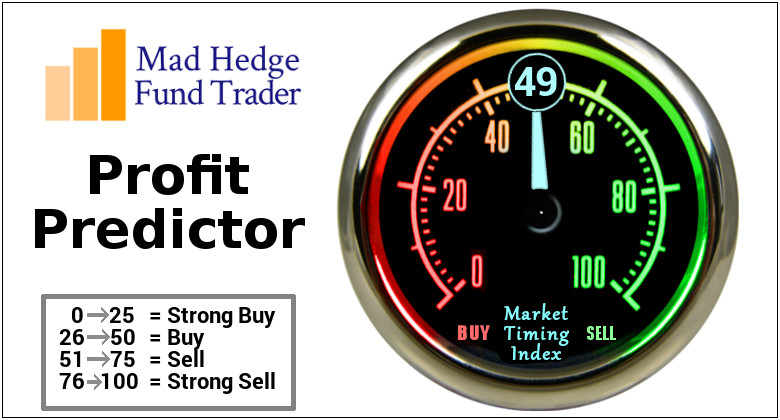
Clearly, the long-term solution to this health crisis, and possibly the only hope we have to returning to “normal,” is a safe and effective vaccine.
Companies and health experts around the world have stepped up to that challenge, with investors eagerly anticipating the stocks of the businesses to successfully deliver a vaccine to catapult in value overnight.
This is one of the driving forces behind Pfizer’s (PFE) relentless pursuit of a coronavirus vaccine.
Here’s a quick recap of where Pfizer was before this major announcement.
Pfizer was first recognized as an aggressive player in the vaccine race when the healthcare giant partnered with German biotechnology company BioNtech (BNTX).
After months of working together, Pfizer announced that it aims to produce 10 million to 20 million doses of COVID-19 vaccine by the end of 2020.
So far, Pfizer is testing at least four distinct variations of its vaccine called BNT162. The trials will test roughly 360 individuals, with the study expanding to involve thousands of volunteers if one or two variations of the vaccine indicate progress.
Conclusive data will be available in June or July this year. Meanwhile, Pfizer’s coronavirus vaccine candidate, co-created with BioNtech, is projected to be ready for launch by October.
In an effort to make room for the production of BNT162, Pfizer decided to outsource the production of some of its own branded products to various manufacturers such as Catalent (CTLT).
This move means that instead of paying contract manufacturers to produce millions of doses of a vaccine that might fail to even leave the warehouse, Pfizer has taken it upon itself to produce BNT162 in its own facilities.
According to the company’s estimates, it will cost approximately $150 million to produce BNT162. Since Pfizer is using its own facilities, it could jumpstart the distribution of up to 20 million doses of COVID-19 vaccine even before 2020 ends.
This move to ramp up the manufacture of an experimental drug candidate is a surprising gamble for Pfizer. However, the possibility of having millions of doses of this potential vaccine ready to ship at a moment’s notice could make it a worthwhile risk.
In terms of competition, Pfizer is racing against several biotechnology companies searching for a COVID-19 vaccine in the US and abroad.
One of them is Moderna (MRNA), which has a $19 billion market cap and funding access worth $2.4 billion including government endowment.
Moderna collaborated with Lona (OTC: LZAGY), which is an international chemical manufacturer, to scale up its production power.
Apart from this, smaller biotechnology companies like Inovio Pharmaceuticals (INO) and Novavax (NVAX) are involved in the COVID-19 vaccine race as well.
Inovio is backed by its history of vaccine research on the swine flu outbreak in 2009 and the 2013 avian flu.
Novavax, which has a modest market cap of $82.2 million, received government funding worth $4 million to help the company move forward with clinical trials.
Additional financial support was also sent by the Coalition for Epidemic Preparedness Innovations. In terms of manufacturing, Novavax has been working with Emergent BioSolutions (EBS) to meet production demands.
Outside the US, two of the frontrunners are Chinese companies CanSino Biologics and Sinovac Biotech (SVA).
The stocks of various micro-cap companies have been on the news since the COVID-19 vaccine race started. Several of these smaller firms used their newfound popularity to boost their stock price and generate additional capital to fund their operations.
I think there are several biotechnology and healthcare companies that warrant following. However, there remains a dearth of data on these companies working on the COVID-19 vaccine. Choosing the best stock from these names at this point demands too much guesswork, an investment strategy I have never endorsed.
The harsh reality is that most of these smaller companies will most probably never manage to get a program off the ground and into a conclusive efficacy trial. The main reasons are limited capital, restricted bandwidth, and lack of will to move forward.
Small companies, particularly in the biotechnology and healthcare sectors, typically lack the money and manpower to efficiently run a program without sacrificing the rest of their R&D efforts. For those companies that manage though, the pace will likely be too slow to actually merit a meaningful place in the market.
Investors looking to invest in the surging COVID-19 vaccine space should turn to companies that hold the greatest odds of success. That means larger and more established companies with global testing, regulatory, and manufacturing capacities.
This is not to dissuade anyone from taking a dip into the small-cap companies pool though.
Rather, I would recommend to simply keep these biotechnology companies on your watch list and see how the situation develops. After all, these are decent stocks on their own right.
Nonetheless, it’s still too early to tell how their long-term business models look like outside the search for a coronavirus vaccine.
In comparison, Pfizer has a proven track record of being a great investment. The company has been showing off a decent dividend growth for 10 consecutive years, reporting an annualized dividend worth $1.52 per share.
More importantly, this biotechnology and healthcare company is showing no signs of slowing down anytime soon. In 2019 alone, Pfizer introduced six new drugs on the market and shared that it has 95 more in its pipeline.
Keep in mind as well that Pfizer’s current price of roughly $37 per share -- a far cry from its 52-week high that reached $44.56 -- is significantly lower than the industry average at the moment. For a stock that presents such a wealth of opportunities, Pfizer offers significant value to its investors.
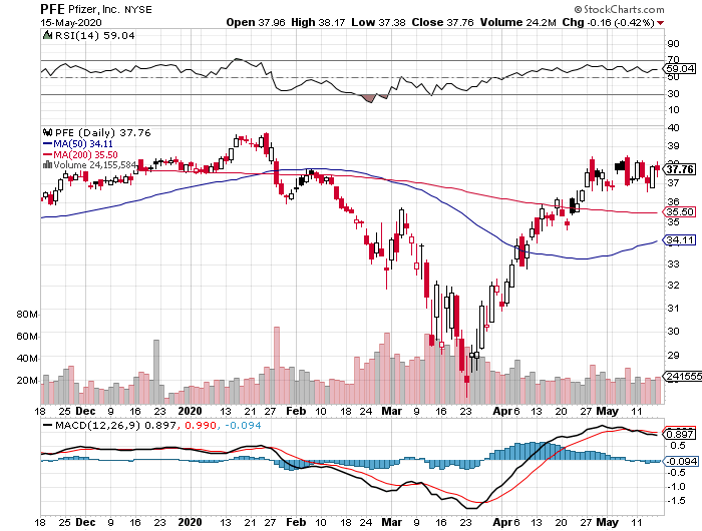
Legal Disclaimer
There is a very high degree of risk involved in trading. Past results are not indicative of future returns. MadHedgeFundTrader.com and all individuals affiliated with this site assume no responsibilities for your trading and investment results. The indicators, strategies, columns, articles and all other features are for educational purposes only and should not be construed as investment advice. Information for futures trading observations are obtained from sources believed to be reliable, but we do not warrant its completeness or accuracy, or warrant any results from the use of the information. Your use of the trading observations is entirely at your own risk and it is your sole responsibility to evaluate the accuracy, completeness and usefulness of the information. You must assess the risk of any trade with your broker and make your own independent decisions regarding any securities mentioned herein. Affiliates of MadHedgeFundTrader.com may have a position or effect transactions in the securities described herein (or options thereon) and/or otherwise employ trading strategies that may be consistent or inconsistent with the provided strategies.
This site uses cookies. By continuing to browse the site, you are agreeing to our use of cookies.
OKLearn moreWe may request cookies to be set on your device. We use cookies to let us know when you visit our websites, how you interact with us, to enrich your user experience, and to customize your relationship with our website.
Click on the different category headings to find out more. You can also change some of your preferences. Note that blocking some types of cookies may impact your experience on our websites and the services we are able to offer.
These cookies are strictly necessary to provide you with services available through our website and to use some of its features.
Because these cookies are strictly necessary to deliver the website, refuseing them will have impact how our site functions. You always can block or delete cookies by changing your browser settings and force blocking all cookies on this website. But this will always prompt you to accept/refuse cookies when revisiting our site.
We fully respect if you want to refuse cookies but to avoid asking you again and again kindly allow us to store a cookie for that. You are free to opt out any time or opt in for other cookies to get a better experience. If you refuse cookies we will remove all set cookies in our domain.
We provide you with a list of stored cookies on your computer in our domain so you can check what we stored. Due to security reasons we are not able to show or modify cookies from other domains. You can check these in your browser security settings.
These cookies collect information that is used either in aggregate form to help us understand how our website is being used or how effective our marketing campaigns are, or to help us customize our website and application for you in order to enhance your experience.
If you do not want that we track your visist to our site you can disable tracking in your browser here:
We also use different external services like Google Webfonts, Google Maps, and external Video providers. Since these providers may collect personal data like your IP address we allow you to block them here. Please be aware that this might heavily reduce the functionality and appearance of our site. Changes will take effect once you reload the page.
Google Webfont Settings:
Google Map Settings:
Vimeo and Youtube video embeds:
